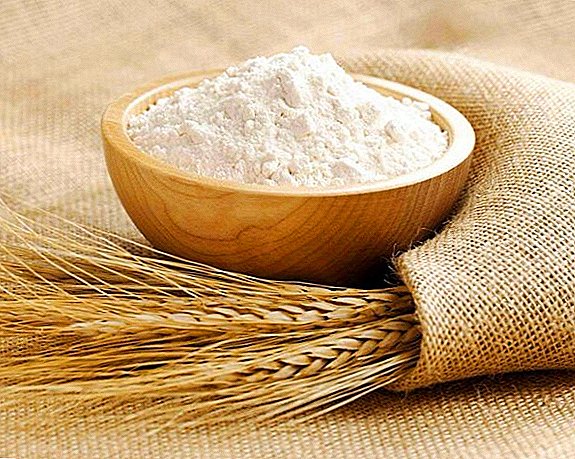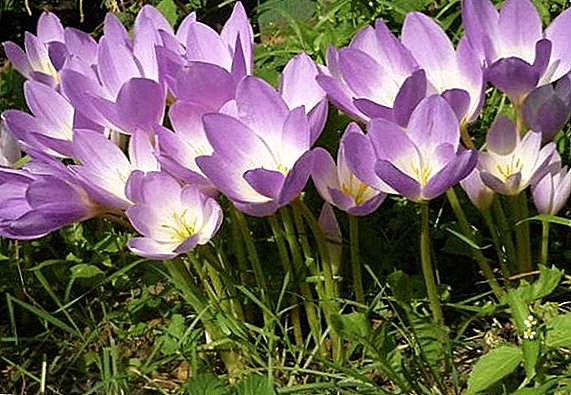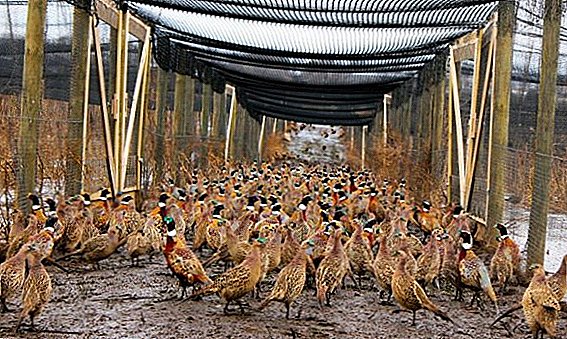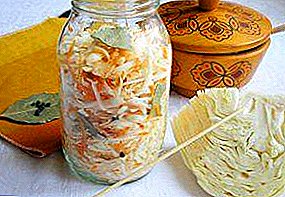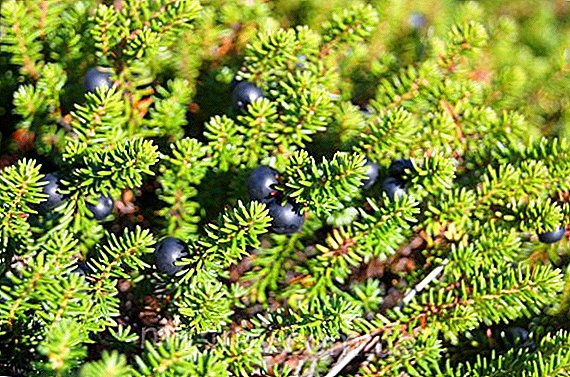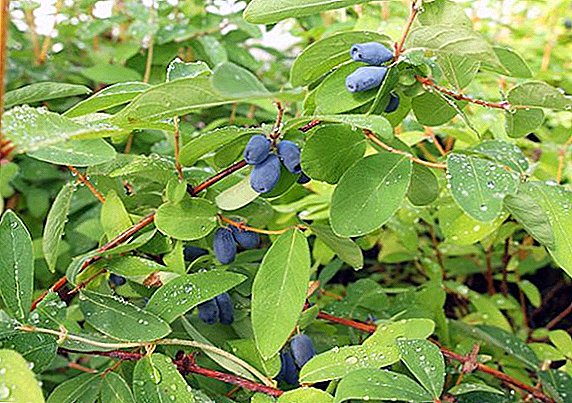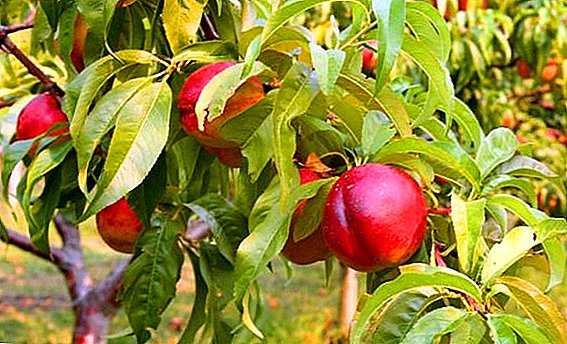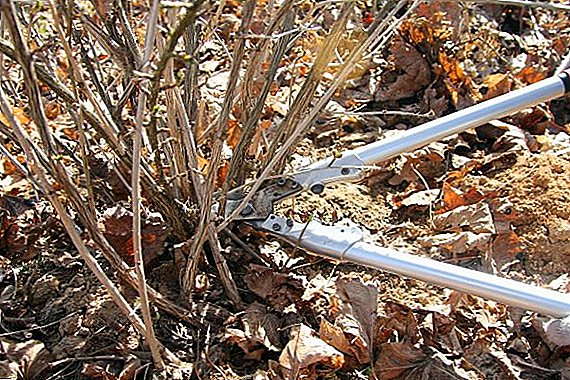 Gooseberry pruning is not a whim of perfectionist gardeners, but an essential procedure on which the quantity and quality of the crop depends. For sweetness and growth, berries need as much light as possible. In the neglected berry, plants will grow only lush crowns, on the branches of which occasionally there will be small and tasteless fruits. How to bring the bushes in order, is it possible to alternate between autumn and spring pruning and with what frequency they are carried out - you will find answers to these questions later in the article.
Gooseberry pruning is not a whim of perfectionist gardeners, but an essential procedure on which the quantity and quality of the crop depends. For sweetness and growth, berries need as much light as possible. In the neglected berry, plants will grow only lush crowns, on the branches of which occasionally there will be small and tasteless fruits. How to bring the bushes in order, is it possible to alternate between autumn and spring pruning and with what frequency they are carried out - you will find answers to these questions later in the article.
Is it necessary to cut the gooseberries in autumn
The need for regular haircuts for gooseberries due to its light-loving and demanding care. Without proper conditions, the culture is at risk of getting common infections and becoming victims of harmful insects.
Important! The gooseberry is very afraid of the northern winds, harsh winters, nearby groundwater and shade. In such conditions, the plant is doomed to death.

Experienced gardeners recommend the first pruning of a bush before planting, and after rooting, form a crown annually and clean it from old and sick sprouts. It is important that all manipulations with the pruner are implemented in one season - in the fall. It is strictly forbidden to cut branches in one year in October, and in another - in March. Such actions provoke strong stress for the plant and, possibly, will cause its death in the winter.
Most land owners are not fully aware of the main purpose of pruning. Consequently, because of the wrong actions, the bushes lose their fertile branches, and the crop still remains small and tasteless. Therefore, before taking up the pruner, you need to understand the key principles of haircuts.
Check out the most popular gooseberry varieties: "Commander", "Malachite", "Grushenka", "Consul", "Honey", "Kolobok", "Krasnoslavyansky".Some of them are aimed at forming the crown, while others are aimed at sanitary cleaning. In the first variant, emphasis should be placed on the removal of competing branches and highly thickened segments, and in the second, on cutting frost-bitten, affected by fungi, viruses and insects of the branches.

Important! The key goal of pruning gooseberries is to create a neat crown for the further full development of the bush. Do not allow the weakened lower branches to lie on the ground and take root - they will be the first to die in severe frost.If all the above procedures are done in a timely manner and in compliance with the rules of agricultural technology, then the berry for two decades will thank you for a stable and generous fruiting. Yes, and the quality of the harvest, you will be pleasantly surprised.
When to get started
The gooseberry is very sensitive to heat, therefore, with the onset of spring, it adapts before the rest of the berry crops after winter sleep. In March and April to have time with a full cut unreal. By the time we traditionally take on garden tools, buds are beginning to open on the gooseberry bushes. If you start a haircut during the growing season, the plant will get very sick and may even die. That is why experts advise to form a crown and carry out sanitary cleaning on it in the fall. 
The best time for this is the second decade of November, when the foliage is completely showered. But these are only indicative dates. When planning pruning, every gardener should take into account the climatic specifics of his region, weather conditions, temperature conditions.
Ideally, pruning is done when the plant slows down the movement of the juice. It is important to catch at least a month before the start of freezing weather. After all, the bushes need time to heal wounds and prepare for the cold.
Important! It is strictly forbidden to remove shoots on the gooseberry in the summer months. The fact is that in this period the culture is at the peak of the growing season. New sprouts do not have time to get stronger by the winter and will die at the first hard frost.

What we need for work
Experienced gardeners always have the right inventory at hand, but for beginners this is the first stumbling block. To understand all the details of the preparation of the necessary set for pruning, look at the bins of professionals.
So, we will need:
- protective gloves with a dense rubber base;
- durable outerwear with long sleeves (so that the spines do not scratch hands);
- garden pruner;
- small saw (for old bushes with thick branches);
- garden shears (preferably with long handles);
- garden pitch (for putty volumetric cuts);
- paint or chalk (for marking places cut);
- car (for collecting and exporting pruned branches);
- if necessary, disinfectants (for treatment of plants damaged by bacteria, fungi or viruses).


What shoots should be cut
Often, newcomers in the process of cutting gooseberries make the same mistake: they radically cut away everything that they think is superfluous. As a result, such a bush very painfully adapts to the new form. In the meantime, professionals advise to spare the plant. After cutting, it should be at least 30% of the original biomass. Otherwise, it may die.
Did you know? Wild thickets of gooseberries from ancient times covered the territory of modern Europe. The prickly and inconspicuous plant was first noticed by the French, who at the beginning of the 13th century tried to cultivate it. Over time, the sour-sweet fruit of this culture attracted the British. By that time, gardeners had already revealed the main secrets of getting large and sweet berries. The rest of Europeans learned about gooseberries only in the XVII century..

For pruning to benefit your berry, take into account the generally accepted rules for forming and cleaning the spray crown. To be deleted:
- branches directed into the bush;
- competing shoots (the preference is always for the strongest);
- dry and blackened shoots after winter;
- branches that are too low or leaned and rooted;
- old and damaged pests and shoots.
Take a closer look at how to properly trim the gooseberries.

Differences depending on age
For formative trimming, bush age is of particular importance. It can be determined by bark: in young specimens it is smooth and greenish, and in old specimens it is rough, thick and dark gray.
The first pruning should be carried out before spring rooting of the seedling. To this end, remove the tops on all shoots in such a way that no more than 4 buds are left from the root. Such radical measures will be the basis for the correct laying of fruitful branches. In the fall, there is no need for such manipulations. At this stage, the main task of the gardener is to eliminate dead branches. They are removed to the place where new shoots grow.
Did you know? In the XI century, the gooseberry was an integral part of all the monastic gardens of Europe. Initially, its green berries were revered as soup seasonings, and ripe and sweet - as a dessert. Over time, the fruits began to be used for medicinal purposes.
 Remove the tops on all shoots of gooseberry
Remove the tops on all shoots of gooseberryInexperienced gardeners should be prepared for the fact that for the first 2-3 years the berry will not produce the desired yields. Regardless, it is important to provide the gooseberry with the right care. The peak of its fruiting will fall on the 5-10th years of life, after which the decline will begin again. Therefore, it is important to give a timely impetus for the correct formation of a healthy bush. This is done as follows:
- in the first year of life, in the autumn, all weak and broken shoots are cut from a sapling; the strong and strong ones remove the apex at the level of the 2-3rd bud;
- in the 2nd year of life in the bush, 3 or 4 powerful trunks are chosen, on which the crown will be formed (their tops must also be shortened by a third), everything else is removed from the ground itself;
- on the 3rd and 4th years of plant life it is important to check the presence of the main shoots, which should be no more than four, zero shoots (so called those that grow low near the ground) are cut at the base, and on the rest of the shrub clean a third branches;
- in the 5th year of life, the gooseberry has already been formed and does not require a modeling haircut, at this stage of development and in the future for it sanitary cleaning and control over the number of shoots is relevant.
 Pruning gooseberry 1-3 years after planting
Pruning gooseberry 1-3 years after planting
Important! Ideally, eight-year-old gooseberry bushes should have about 4–8 powerful main shoots (the amount depends on the variety) and about 25 branches of different ages..All subsequent pruning aimed at cleaning the plants from non-bearing shoots. As a rule, these are instances that are more than 7-8 years old. They are distinguished by their curvature and dark bark.
Pruning a bush to rejuvenate
The rejuvenating haircut is shown to the bushes that have already crossed the peak of their fruiting. These are plants that are over 10 years old. Experienced gardeners say that the gooseberry can be made to give a good harvest by stimulating the growth of new shoots. Thus, all branches from which the seedling once grew are subject to removal. But pruning should not completely destroy the bush. Replacement of young shoots occurs gradually. Do not rush to remove growths from fruit-bearing branches. And also make sure that after the procedure, about 50% of its crown remains on the bush.
Experienced gardeners are encouraged to familiarize themselves with the features of planting and caring for gooseberries in the garden.

Old gooseberries are always distinguished by a large number of zero shoots and a slight increase in perspective branches. It is desirable for the season to remove about a third of unnecessary sprouts.
Please note that all efforts will only slightly increase the yield of such specimens. Therefore, weigh all the pros and cons and make the right decision about planting a new seedling. After all, the difference between young berry crops and rejuvenated ones will still be felt in the quantity and quality of fruits.
Did you know? To this day, linguists can not unravel a tangle of different names of gooseberry berries. For example, in English it sounds like "gooseberry" (goose foot), in German - "stachelbeere" (Christ turn), in Belarusian - agrest, which is similar to the "unripe cluster" borrowed from the Italians. Many believe that the origin of the various names of the plant has nothing to do with geese, or with Christ, or with green tassels. In fact, this is a layering of different languages and dialects. Therefore, the Dutch word "kruisbezie" is considered the initial point in this long etymological chain.
 Planting a new gooseberry seedling
Planting a new gooseberry seedlingWhat to do after trimming
During autumn pruning, berry bushes lose a lot of vegetation, which is a great stress for them. Therefore, competent forming and cleaning plants is still in the further care.
The complex of recovery procedures includes:
- Treatment of large cuts with garden pitch - as an alternative for disinfection, you can cover bare wounds with crushed activated carbon and urea solution (prepared in a ratio of 1: 7).
- Fertilizing plants with mineral-organic fertilizers - purchase variations with the label “autumn” are ideal. Complex substances can be replaced with a homemade mixture of 15 kg of humus, 200 g of superphosphate and 40 g of potassium.
- Generous watering of the bush - the main task of the procedure is to prepare the gooseberries for wintering. For this purpose, it is recommended to pour about 2 buckets of water under each root. She must be well defended and not be cold.
- A rigorous inspection of the berry for the presence of pests or signs of disease - if necessary, the soil in tree trunks will need to be treated with any fungicide (Infinito, Coronet, Teldor, Antrakol, Flint Star). As a prophylactic, Bordeaux liquid has proven itself very well. She needs to spray not only the ground, but the whole bush.
- Preparing for winter - young seedlings require special attention, but in regions with severe winters, all plants need to be warmed. This is done with peat or sheet compost. It is important that the mulch covers about half a meter of the stitch zone.
If you want to protect the plant from possible natural troubles, find out why you need soil mulching, especially the reception of agrotechnical reception.

Frequent newbie mistakes
So that the pruning of the berry was successful, and the young gardener could soon reap the rewards of his labors with pleasure, we advise you to learn from the mistakes of others. Here is a list of the most common mistakes:
- Rough violation of terms of cutting. We are talking about summer cutting of branches, as well as about failures in time.
- Intuitive deletion of branches. Usually it happens when a novice gardener, without understanding the subtleties of pruning, tries to clean the bush as much as possible from everything that he thinks is superfluous. As a result, prospective branches can fall under the shears, and the remaining weak ones are doomed to death in the very first frost.
- Abundant removal of shoots. This is a fatal mistake, because in most cases it ends with the destruction of the bush.
- Cutting of one-year increments on fruit-bearing sprouts. With such pruning, the crown of a plant cannot further develop.
- Complete removal of the aerial parts of the bush during its rejuvenation.
To increase the yield of gooseberries on your plot, read what gooseberries are sick with and how to cure it.That's all the secrets. Remember the main rules of competent pruning - and the berry will please you for a long time with abundant and tasty fruits.
Important! When forming a bush, the cultivar value matters, since some varieties of the gooseberry are prone to crown growth in 2-3 years, while others will take twice as long. Therefore, you need to be careful with pruning root shoots. First of all, remove the weakest and those that create a shadow inside the bush.
Video: Gooseberry pruning in autumn
Recommendations network users about pruning gooseberry

It is necessary to produce autumn pruning of gooseberries after leaf fall, when the harvest is already gathered. The main rule when pruning branches is to consider the optimal location of the cut next to the fruit bud. It is about 5 mm above the kidney at a 45 degree angle. If the cut is made closer to the kidney, it will dry, and if it is too high above the bud, part of the branch will suffer. The second thing to consider is the position of the kidney. It should be such that the escape, which will grow from this bud, is not directed inside the bush, but outward. This is a pledge of good light and ventilation of the bush.
First, all dry and diseased branches are removed. Dry branches of dark color are old branches. They need to be removed. But if the gooseberry bush is all seemingly dry, then in a year only 1/3 of these branches can be removed. Skeletal branches ideally should be around 10-15. Then it is necessary to cut the branches lying on the ground. There is no need for them: they will not bear fruit. In addition, these "lying" branches develop incompletely due to the fact that they get a little sunlight. They are weak and will inevitably be sick. Examine the bush again and thin its crown. It should be well ventilated.
After the autumn pruning, be sure to hymen the bush.



